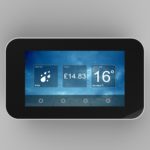Switch2 Energy has published an updated guide to the Heat Network (Metering and Billing) Regulations (HNR), explaining what communal heat scheme operators must do to gain compliance and achieve cost and carbon efficiency savings.
The regulations enforce better metering and billing standards on all of the UK’s communal heat schemes — to improve system performance, fairness for customers and carbon reduction. Legislation forms a cornerstone of international policy to drive energy efficiency on the journey to net zero.
The free HNR guide explains:
- Which buildings and schemes are covered by regulation
- How to prevent civil and criminal penalties from regulatory enforcer (Office for Products & Safety Standards)
- Why energy price increases mean operators should re-assess final metering viability & how to use the cost effectiveness tool (CET)
- Inclusion of the Energy Bill Discount Scheme
- Clarity on compliance dates
- Rules on regular and transparent customer billing
- Updates to the notifications template
Richard Harrison, CEO of Energy Switch2 said: “The regulations are key to driving better practice and are so much more than a box-ticking exercise. Those operators using compliant metering and billing systems achieve higher network efficiency and lower cost and carbon emissions, which also benefits residents.
“A critical part of the regulations is final customer metering. In our experience, installing smart final customer meters on unmetered heat networks can deliver energy savings of up to 50%. With today’s higher energy costs, we could urge operators to complete a simple CET assessment to prove the fast economic returns and ongoing cost and carbon savings of installing these meter systems in residents’ homes.”
Download the ‘Updated Guide to the Heat Network (Metering and Billing) Regulations’
Header image: The Switch2 Energy Incontro smart metering and prepayment system for district heating networks
Earlier this year Switch2 Energy introduced a new online calculator to help heat network operators add up the cost and carbon savings of improved efficiency, more details on that here.










